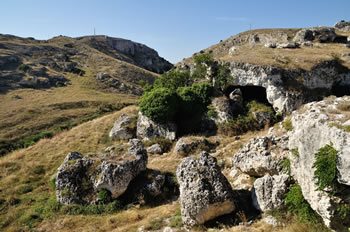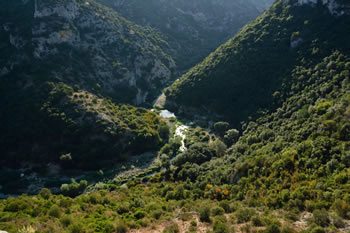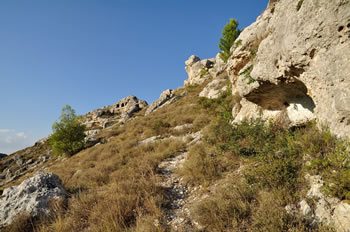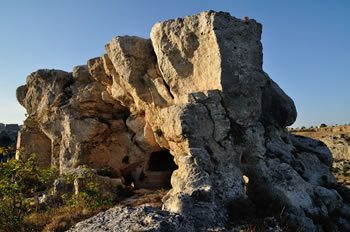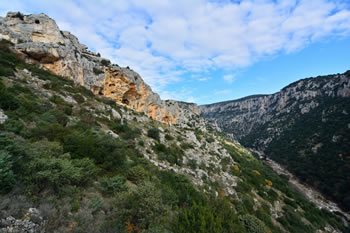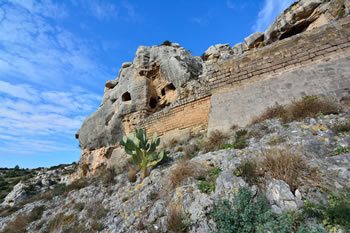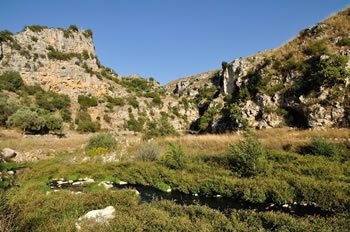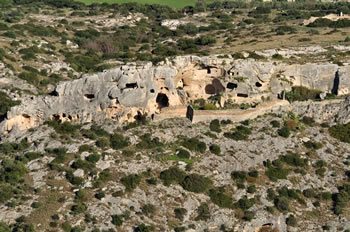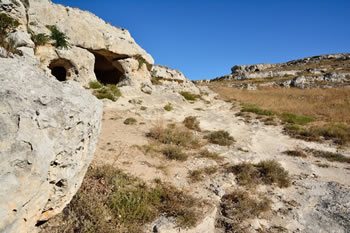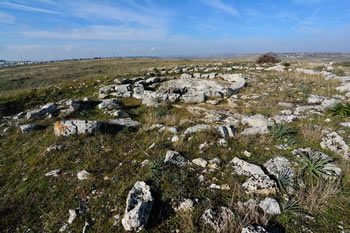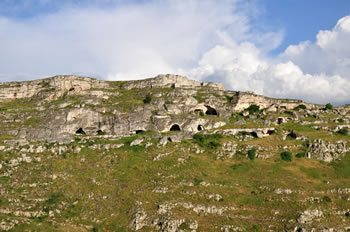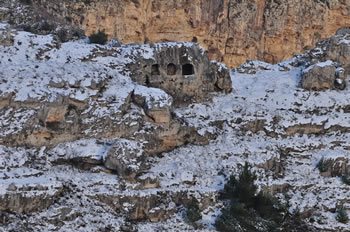Murgia Park
The Parco Archeologico Storico Naturale delle Chiese rupestri del Materano, also known as Parco della Murgia Materana (Lit. - Murgia Materana - park) stretches out across 8.000 hectares and it’s located partly on a rocky plateau and partly on one side of the canyon created by the Gravina stream. Because of the breathtaking view it offers, the Parco della Murgia Materana is listed as a UNESCO World heritage site, along with the Sassi.
It comprises a range of different sceneries that have been inhabited since prehistory, such as the river system of the Gravina that flows through the canyon and then merges into the Bradano river in the Montescaglioso area.
The steep slopes of the canyon reach their maximum height in the Contrada Tempa Rossa, namely a majestic cliff visible up to the ionian coast in the Metaponto area. Additionally, there are instances of mediterranean forest and scrubland. These sceneries result in a series of deep and narrow valleys, terraces, plateaus etc that provide a habitat for many interesting species of flora and fauna.
The landscape changes depending on the exposure, the geological structure, whether there are any springs or water sources etc, resulting in a mixture of woods, scrubland and areas dedicated to agriculture (as testified by numerous masserie, large farms)
The steep slopes of the canyon reach their maximum height in the Contrada Tempa Rossa, namely a majestic cliff visible up to the ionian coast in the Metaponto area. Additionally, there are instances of mediterranean forest and scrubland. These sceneries result in a series of deep and narrow valleys, terraces, plateaus etc that provide a habitat for many interesting species of flora and fauna.
The landscape changes depending on the exposure, the geological structure, whether there are any springs or water sources etc, resulting in a mixture of woods, scrubland and areas dedicated to agriculture (as testified by numerous masserie, large farms)
Cultural landscape
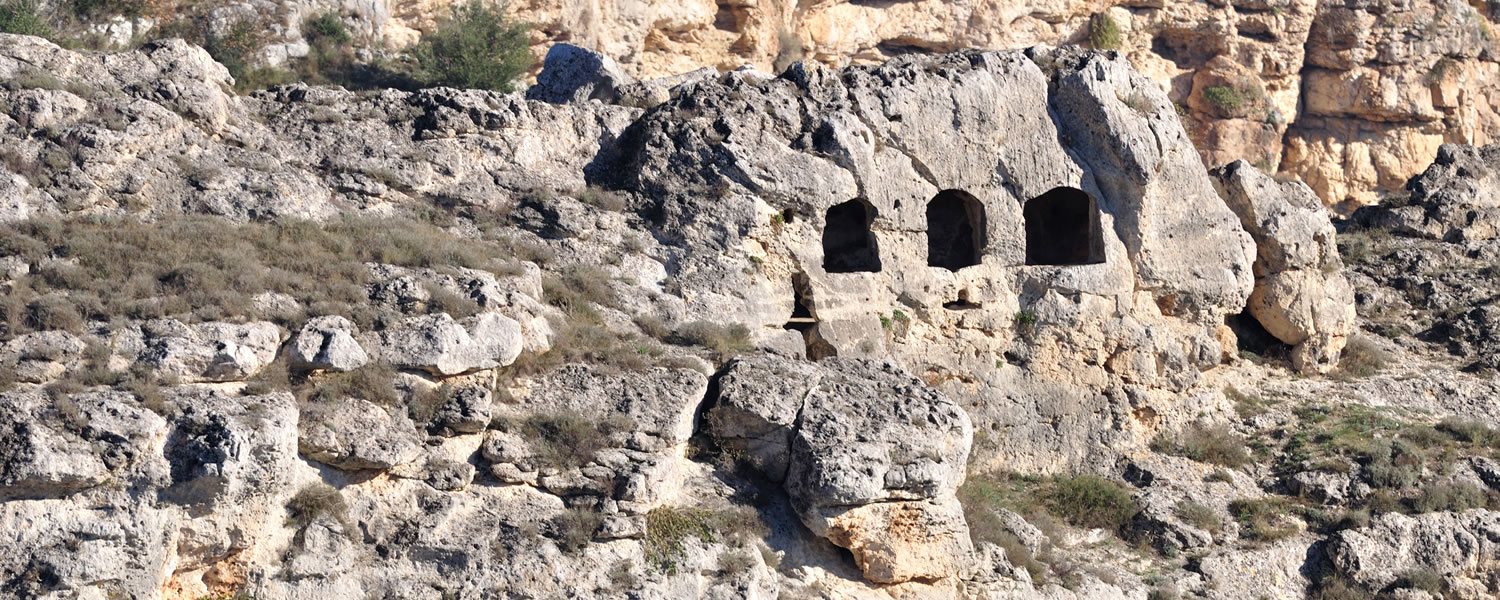 The cultural landscape of the Park is characterized by several villages and settlements that testify how the place has been inhabited since prehistory. After the middle ages these cave complexes were mainly used as places of shelter for farm animals. The cave complexes of Murgia Timone, Murgecchia and Contrada Palomba are the ones closest to Matera.
The cultural landscape of the Park is characterized by several villages and settlements that testify how the place has been inhabited since prehistory. After the middle ages these cave complexes were mainly used as places of shelter for farm animals. The cave complexes of Murgia Timone, Murgecchia and Contrada Palomba are the ones closest to Matera. The southern part of the park borders with the municipality of Montescaglioso and it’s home to the Agna cave complexes, namely the Grotta dei Pipistrelli (Lit. - bat cave -), the Ofra complex, the Santissimo crocifisso della Selva complex (also known as Cristo la Selva), the Saraceno (Saracen) village and the Murgia S. Andrea di Montescaglioso complex.
cave churches and shrines
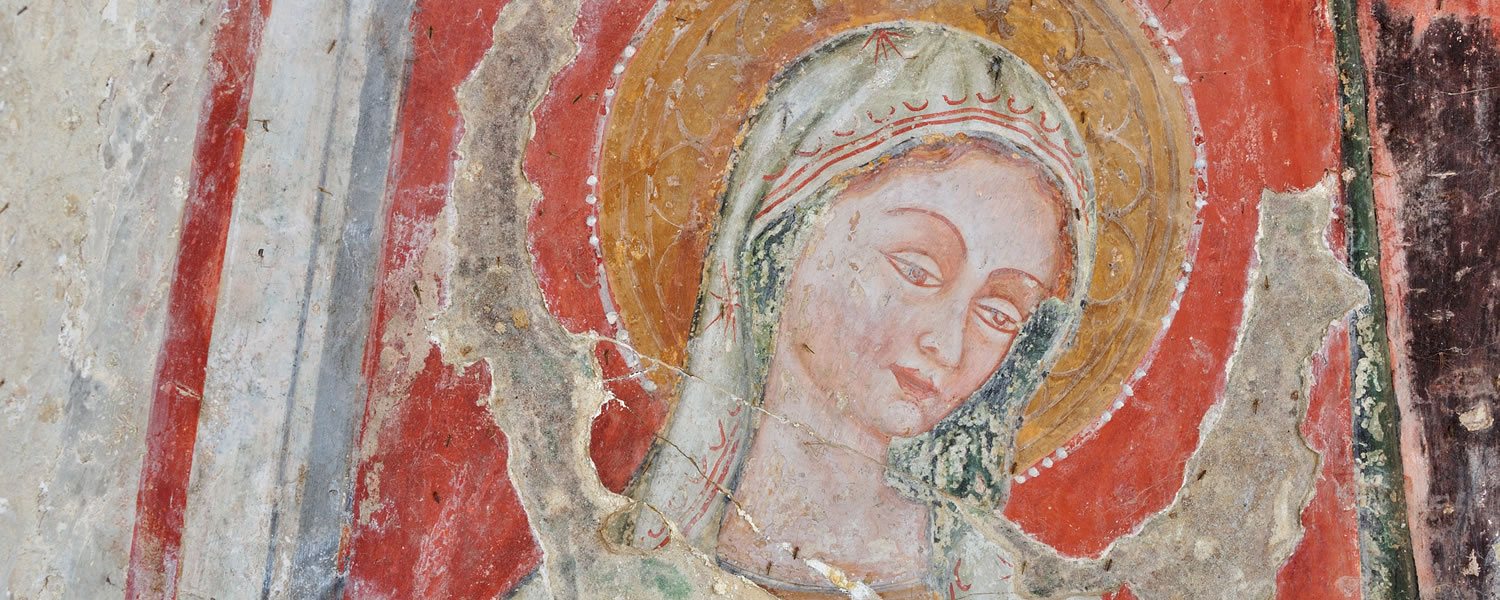 over one hundred cave churches dot the cultural landscape of the park. They all have different characteristics, for instance some are hidden by dense vegetation, whilst others are difficult to access as they’re dug in the steep banks of the ravines. These churches are often embellished with frescoes that testify an everlasting devotion. Oftentimes the structure is a mixture of dug rock and manual construction, and they usually consist of either one nave (as can be seen in the church of the Madonna della Croce), two naves (Church of the Cappuccino Vecchio) or three naves (church of the Madonna delle tre Porte)
over one hundred cave churches dot the cultural landscape of the park. They all have different characteristics, for instance some are hidden by dense vegetation, whilst others are difficult to access as they’re dug in the steep banks of the ravines. These churches are often embellished with frescoes that testify an everlasting devotion. Oftentimes the structure is a mixture of dug rock and manual construction, and they usually consist of either one nave (as can be seen in the church of the Madonna della Croce), two naves (Church of the Cappuccino Vecchio) or three naves (church of the Madonna delle tre Porte) The churches (particularly if built in Romanesque style) are usually characterised by the architectural and decorative elements found in - sub divo - churches, such as apsis, quatrefoil columns, low walls that served the purpose of transepts, walls adorned with blind arches and protruding capitals, vaults embellished by make-believe domes, humpback ceilings and patterned cornices. Some cave churches were linked to the benedectine monks, just like the Cripta del Peccato Originale (originally known as Grotta dei Santi) which is considered one of the oldest in the whole region and is adorned with IX century paintings.
Geologia del Parco della Murgia Materana
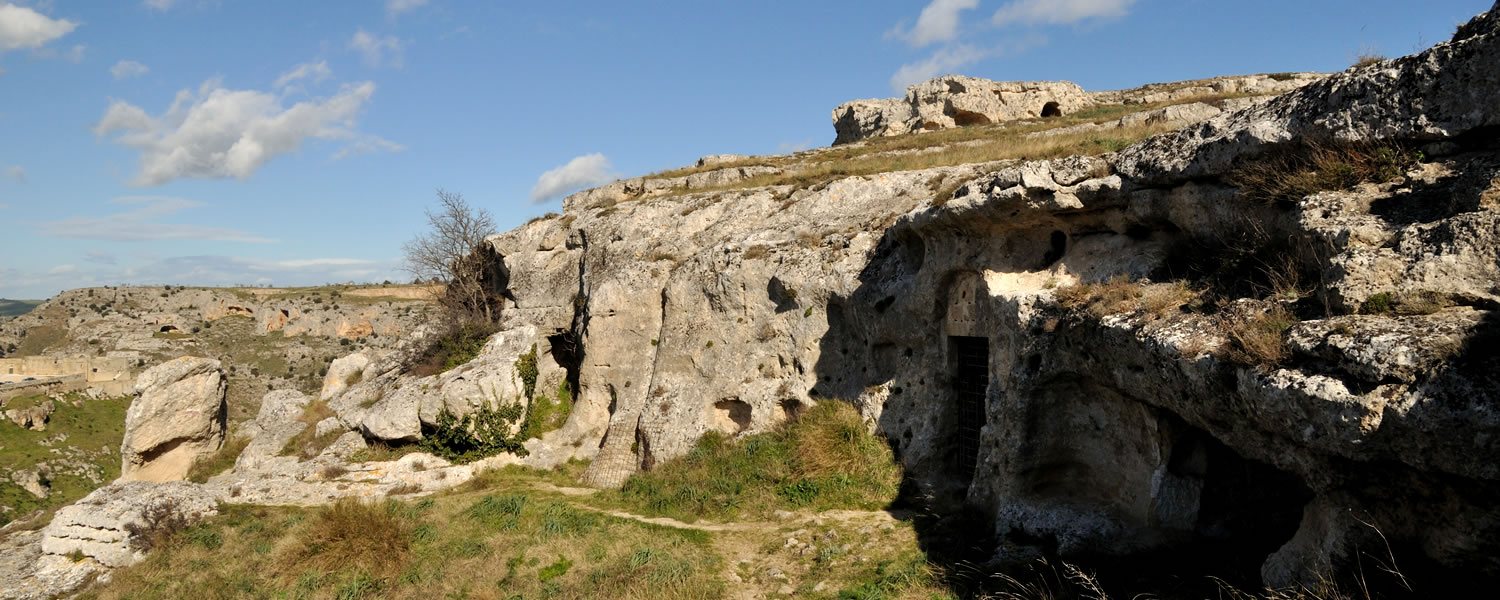 The geological history of the Murgia is particularly interesting, as it resulted in a complex natural environment with specific types of rock. The main ones being limestone and calcarenite, they proved to be fundamental for both prehistoric and more recent human settlements.
The geological history of the Murgia is particularly interesting, as it resulted in a complex natural environment with specific types of rock. The main ones being limestone and calcarenite, they proved to be fundamental for both prehistoric and more recent human settlements. The local geological structure is comparable to the formation of the southern Apennines. The rocks that make up the Murgia are constituted of a mesozoic carbonate platform as well as shallow sea plio-pleistocenic organogenic carbonate deposits. The rocky outcrops that can be observed in the lower part of the Gravina are instances of eroded carbonate substrate, and they’re constituted of limestone dating back to the cretaceous period (65 millions of years ago). This base supports calcarenite, which is a much more recent organogenic-lithoclast rock.
It is improperly referred to as tufa stone, which is in fact a volcanic rock. Even though both limestone and calcarenite are carbonate rocks, they have different origins and structures. Limestone is extremely hard and compact, whilst calcarenite is quite soft and can hence be carved easily, fostering the creation of human settlements around the Gravina. The Sassi have developed on the western side of the canyon.
Murgia Park Flora
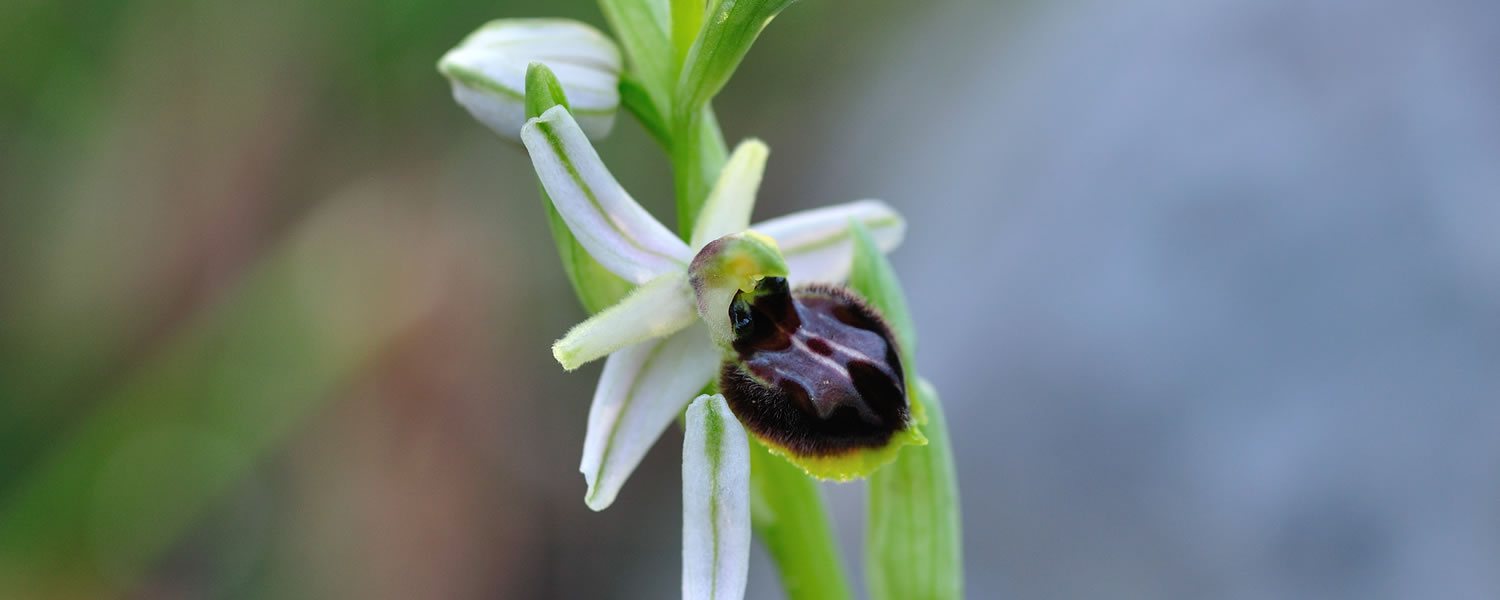 Some of the many local plants that can be found in the park are downy oaks, Macedonian oaks, carobs, evergreen oaks, junipers, lentisk plants, brooms, rockroses, butcher’s brooms, thyme plants, ferulas and asphodel plants. Additionally, there is a vast range of flowers such as globularia plants, bellflowers, sunroses, bindweeds, flax flowers, saffron and a rare endemic species of orchids, ophrys matheolana.
Some of the many local plants that can be found in the park are downy oaks, Macedonian oaks, carobs, evergreen oaks, junipers, lentisk plants, brooms, rockroses, butcher’s brooms, thyme plants, ferulas and asphodel plants. Additionally, there is a vast range of flowers such as globularia plants, bellflowers, sunroses, bindweeds, flax flowers, saffron and a rare endemic species of orchids, ophrys matheolana. Human activities have deeply affected the natural balance of the park, as progressive deforestation has resulted in a substantial change of the landscape, comprised of steppe-like vegetation and scrubland. These different environments foster biodiversity as they’re home to a vast range of rare and different species.
Murgia Park Fauna
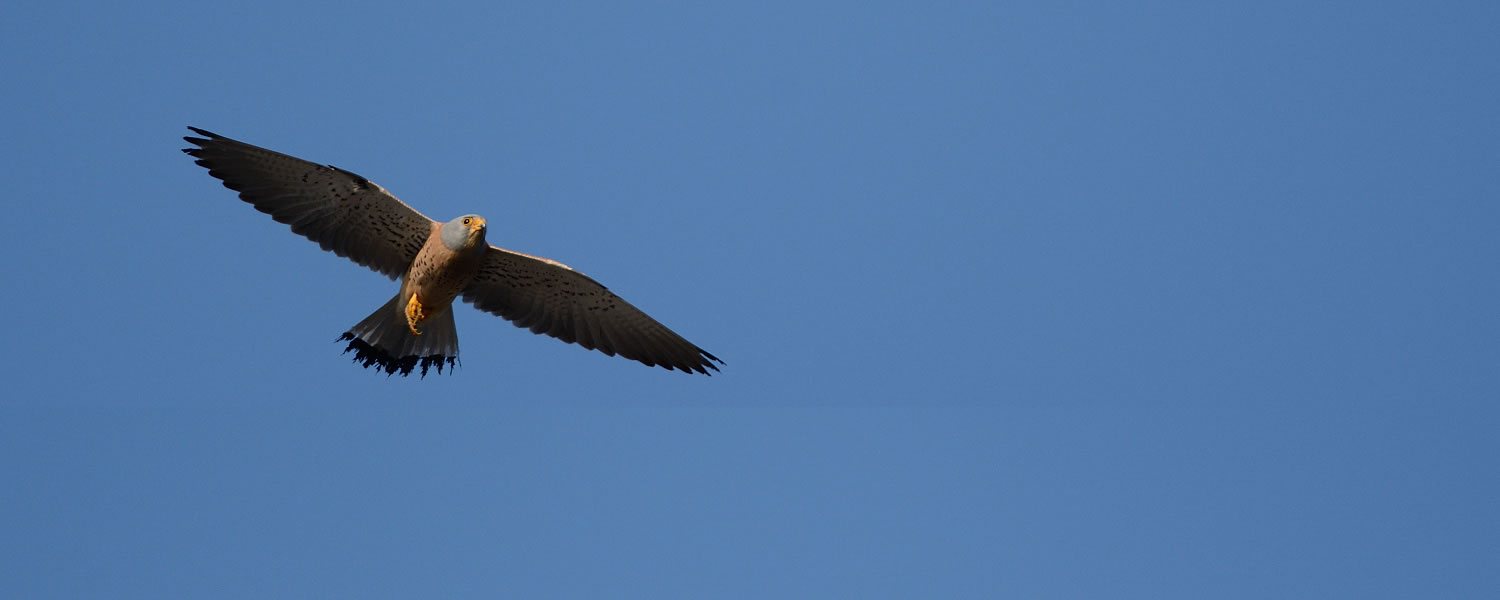 The local fauna varies depending on the different types of environments that have developed on the Murgia and that repeatedly alternate, such as hills, steep rocky slopes, deep ravines etc. Some of the mammals that can be observed by following the trails are: porcupines, stone martens, foxes, weasels, badgers, wild cats and boars. With regard to reptiles there are various turtles and snakes (species include the coluber snake, four-lined snake, grass snake, viper and leopard snake, though the last one is rarer). Additionally, there are many amphibians and insects.
The local fauna varies depending on the different types of environments that have developed on the Murgia and that repeatedly alternate, such as hills, steep rocky slopes, deep ravines etc. Some of the mammals that can be observed by following the trails are: porcupines, stone martens, foxes, weasels, badgers, wild cats and boars. With regard to reptiles there are various turtles and snakes (species include the coluber snake, four-lined snake, grass snake, viper and leopard snake, though the last one is rarer). Additionally, there are many amphibians and insects. The park is also home to several species of birds, such as the black stork, the european roller, the egyptian vulture, the buzzard, the red kite and the lesser kestrel (this last one has become the symbol of the park. It migrates from the African Savannah in springtime, and after mating it overwinters in the Sahara desert during autumn).

 Home
Home

